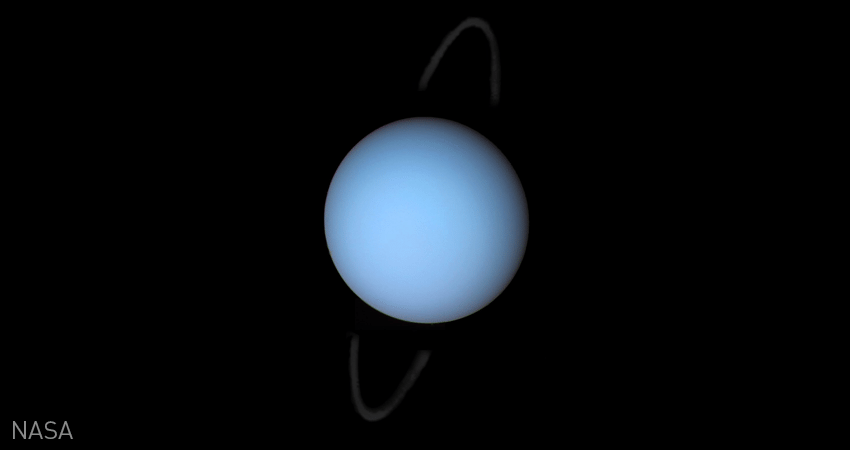Every one of us remembers being in science class in elementary school and giggling uncontrollably when our teacher started talking about the planet Uranus. Unfortunately, those are probably the only memories we have when it comes to the “Ice Giant” planet. But, with help from books like Divine Love Astrology and Person-to-Person Astrology, we now have the opportunity to explore the astrological and mythological significance of Uranus.
-
Uranus as a symbol
The symbol of Uranus (♅) is the circle of Spirit below the cross of duality, with crescent moons on either side of the cross. This symbolizes how, at the level of Uranus, the spirit perceives things from a humble perspective, using the compassions of the heart to consider both sides of an issue equally. Uranus represents compassion, humanitarianism, individualism, revolution, innovation, inventiveness, and eccentricity, symbolizing a sense of friendship and community.
-
A legend is born
The goddess Gaia and the god Uranus mated to produce a race of Titans, among whom was Saturn. Uranus was constantly jealous of his children and tried to push them back into the womb, so Gaia armed Saturn with a sickle, which he later used to overthrow his father, and castrate him, throwing his sperm and genitals into the sea. It has been said that the churning of the sea and his sperm resulted in the creation of the goddess Venus. Little else is known about Uranus and has therefore made it that much harder for astrologers to connect him to the independent, rebellious and inventive characteristics commonly connected to the planet.
-
Chillest place around
Uranus has an atmospheric temperature of -371°F, making it one of the coldest planets in the solar system. The next coldest planet is Neptune, whose atmospheric temperature can reach a high of -330°F.
-
Put a ring on it
All except for two of Uranus’s rings are thought to be extremely thin, narrow, and dark. The rings are made of ice and debris, ranging in size from small, dust-sized particles to large boulders measuring up to 20 meters in diameter. Scientists believe that the rings were formed when one or more of Uranus’s many moons shattered after colliding with the planet or other space debris.
-
Goodnight moon
Uranus has a total of 27 moons, each of which is named after a character made famous by William Shakespeare and Alexander Pope. Some of these moons include Oberon, Titania, Miranda, and Ariel, which are vastly made of frozen ice and rock mixtures.
-
The “Ice Giant” planet
Uranus is commonly referred to as an “Ice Giant” planet because, like other gas giants, it has a hydrogen upper layer made of hydrogen and helium. Just below this layer is an icy mantle, surrounding its rock and iron core. The upper atmosphere is made of water, ammonia, and methane.
-
Blown away
Winds on Uranus can reach speeds of 560 miles per hour. To put that into perspective, the average wind speed at the center of a hurricane is only 74 miles per hour. The highest wind speed ever recorded on Earth was 253 miles per hour during Australia’s Tropical Cyclone Olivia in April 1996.
-
Now switch
While most planets in the solar system rotate counter-clockwise on their axis, Uranus and Venus are the only two planets that rotate clockwise. Known as a retrograde rotation, this anomaly may have been caused by a collision with an asteroid or other large object, which caused the planets to change their rotational path.
